10 Jun MOVING FROM WELLNESS TO WELL-BEING
“What’s good for people?” This is a question that we are constantly asking ourselves and the answer will always change as long as our needs keep changing. Good talent is hard to come by these days when assembling a team of employees. Top talent is becoming harder to recruit and even harder to retain. I think most people would be surprised to know that 85% of the global workforce is actively or passively looking for a new employer while 87% of the global workforce is not engaged or actively disengaged. How do we solve this problem? Invest in well-being. Most organizations have let this idea slip between the cracks while only focusing on wellness. It’s time to shift gears and make our workplaces about more than just work.
Health is defined as “a state of complete physical, mental and social well-being and not merely the absence of disease or infirmity.” While most employers would assert they significantly invest in employee health, there are still areas that need to be addressed. Well-being includes employee wellness but addresses the psychological well-being of the individual such as worker engagement, choice and control, work life balance, financial well-being, etc. Corporate wellness initiatives were first explored in the 1970s and expanded a decade later when risk managers began to understand the importance of ergonomics in workplace safety and employee health. We have now realized that if we focus only on a fraction of the problem (ergonomics), we risk missing opportunities to further enhance the well-being and performance of our employees.
Unless an employee’s basic needs are met, well-being and engagement are unattainable. By using the framework of Maslow’s Hierarchy of Needs, we can begin to formulate practices and processes that will greatly impact employee well-being:
Self-Actualization: Purpose and meaning
Esteem: Self-worth and respect
Belonging: relationships and connections
Safety: Security, safety and stability
Physiological: Physical health and comforts
Keeping the workforce healthy in all aspects should be a priority and not an option. People are more valuable than buildings, technology and investments. People have a choice about whom they work for and how much they are willing to give to their job so why not give them something in return? Here are some practical options to incorporate well-being into the workplace:
Encourage movement and activity: Place printers and trashcans in a central location
Promote a healthy lifestyle: have healthy food and drink options on site
Provide holistic ergonomics support: Install monitor arms to reduce eye and neck strain
Reduce work-life conflict: Offer alternative work locations
Encourage active workdays: Remind employees to take frequent breaks
Create a sense of community: Recognize team accomplishments
Provide sensory experiences: use a range of color, texture, materials, lighting and graphics
Provide the power of choice and autonomy: provide furnishings and accessories that allow for personalization

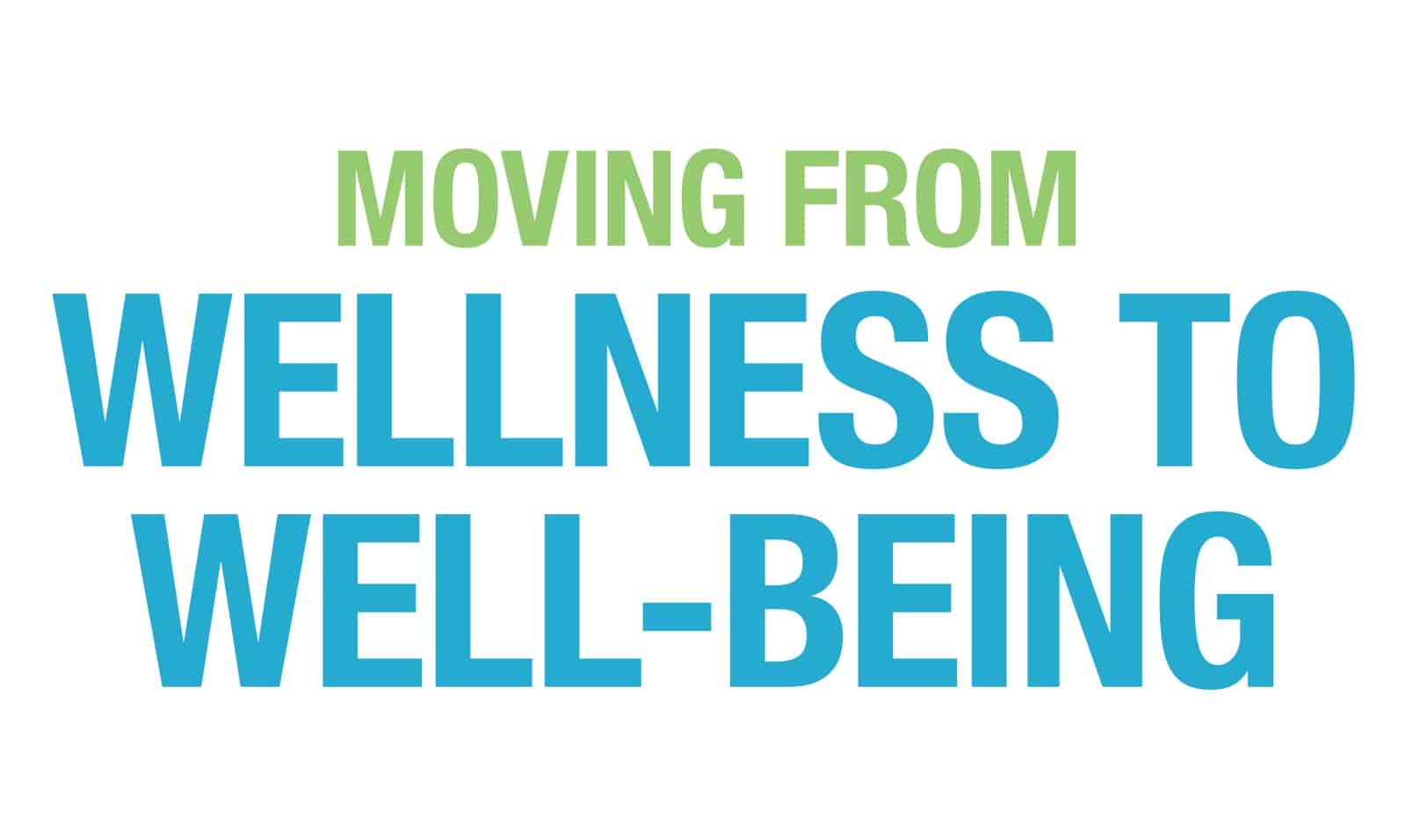
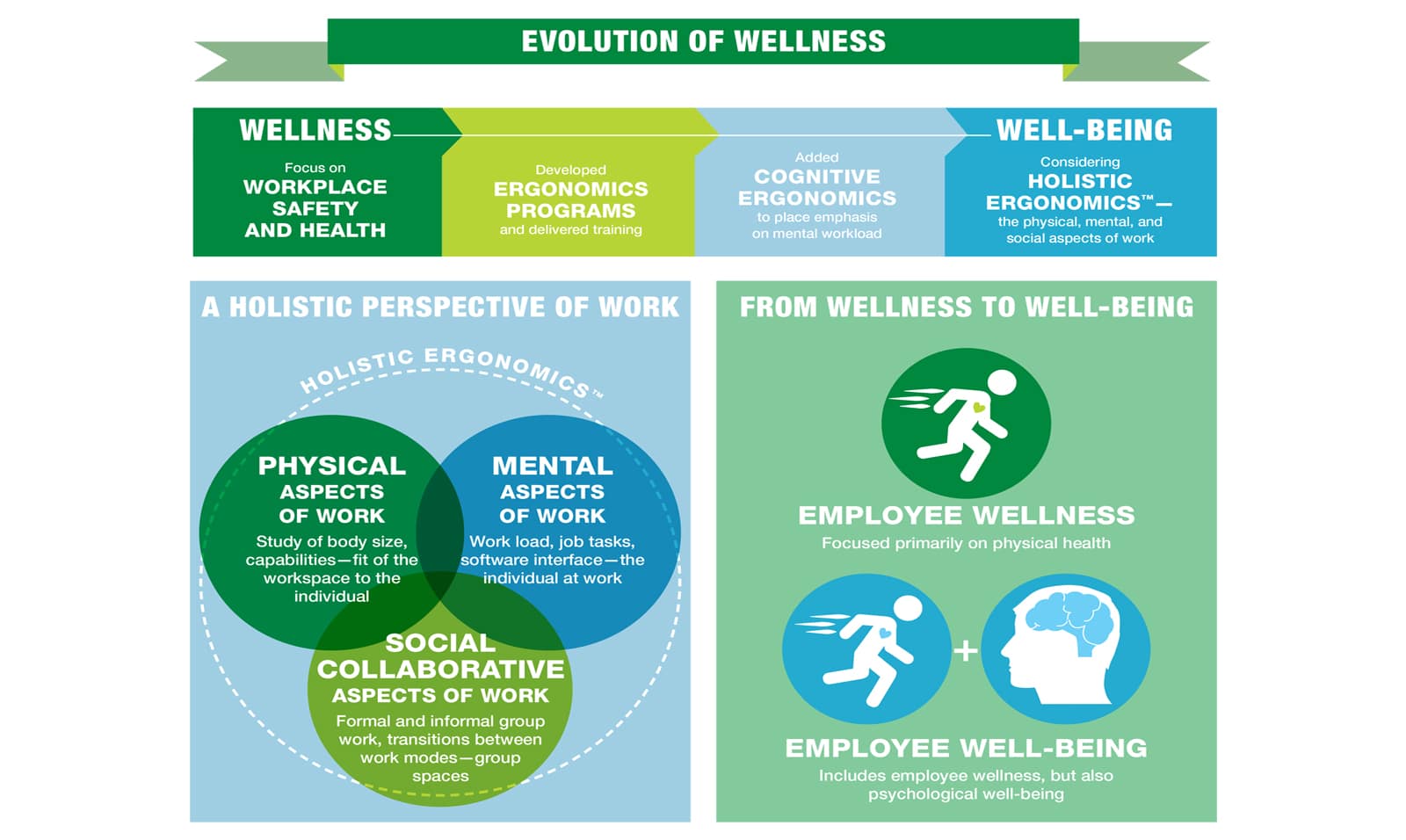
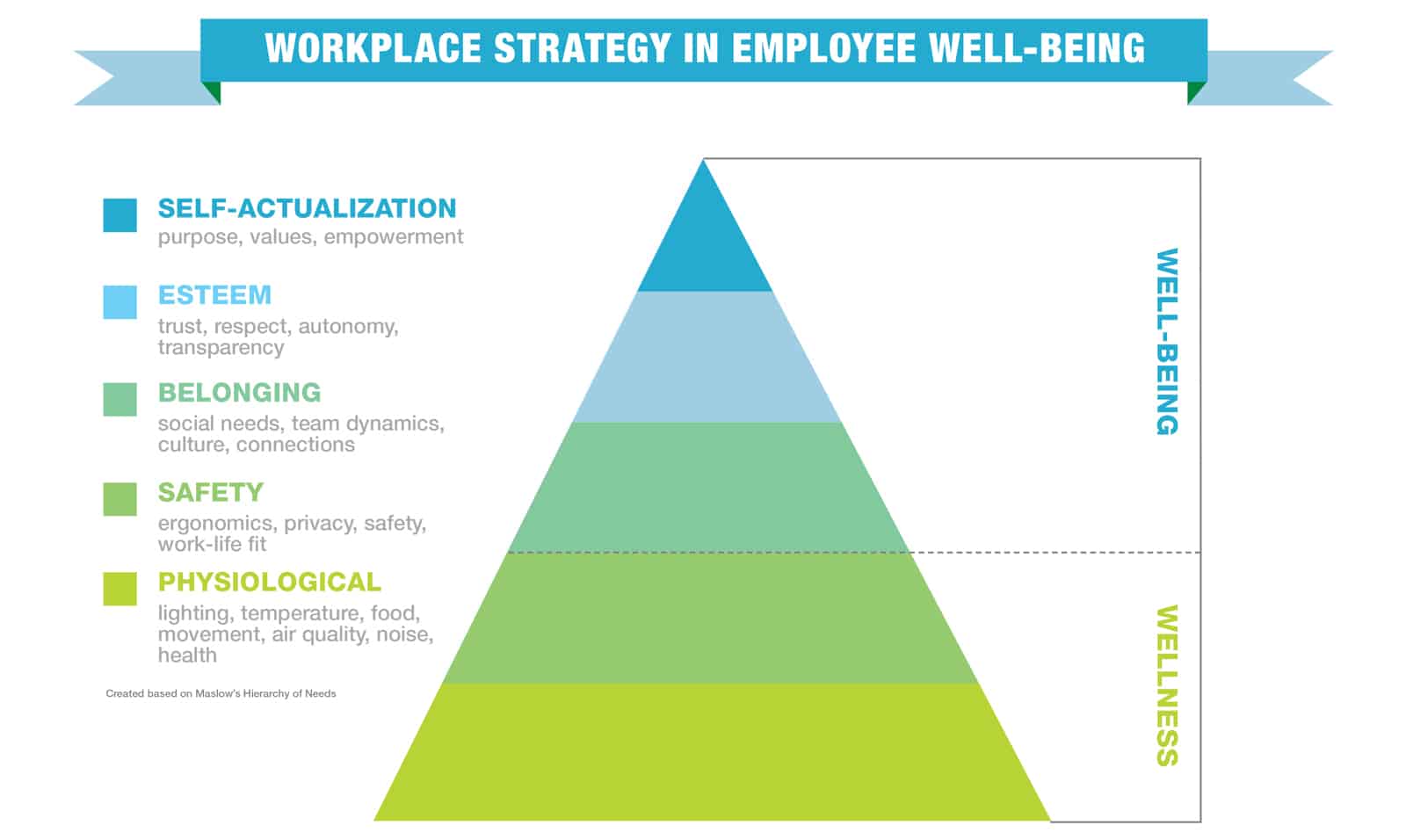
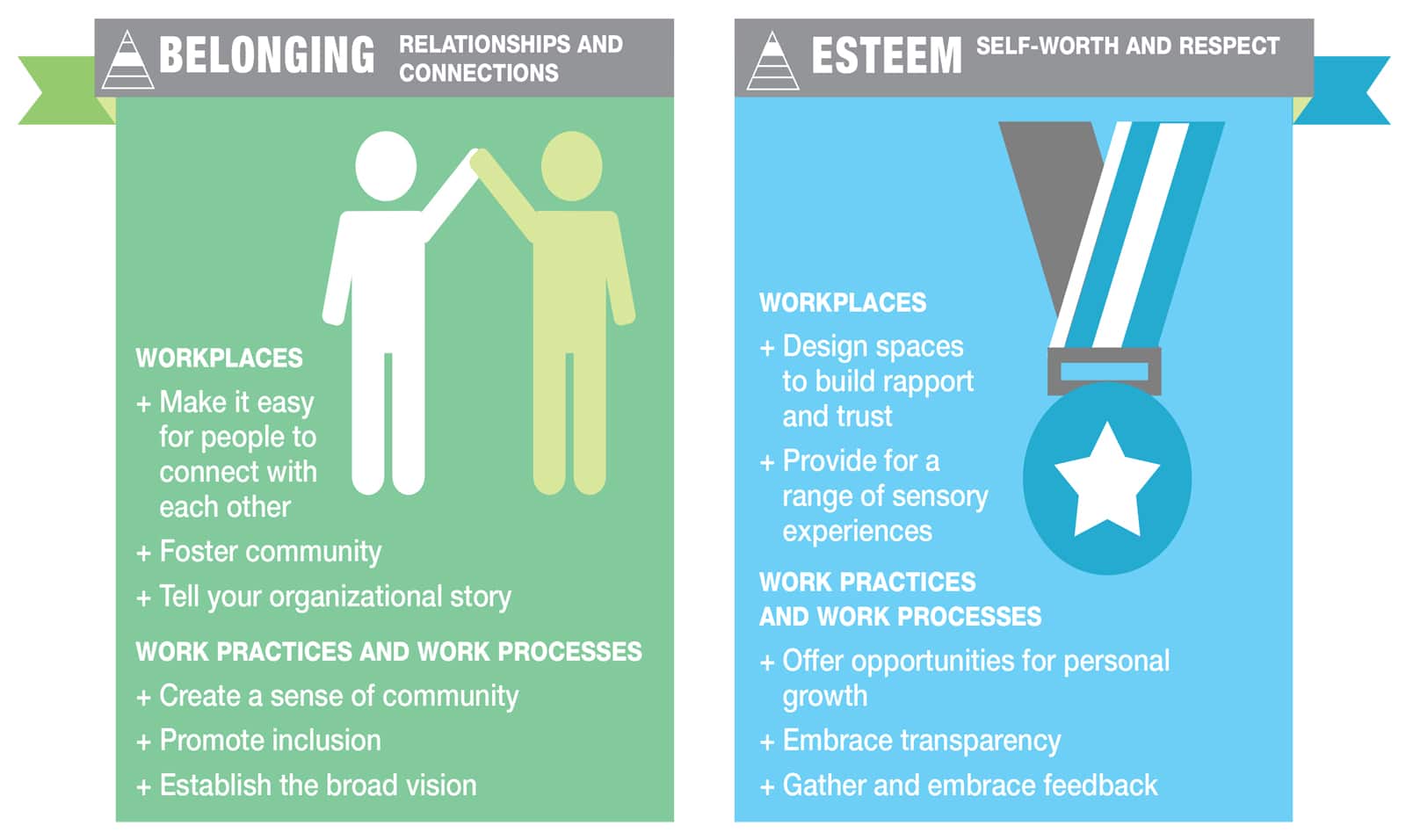
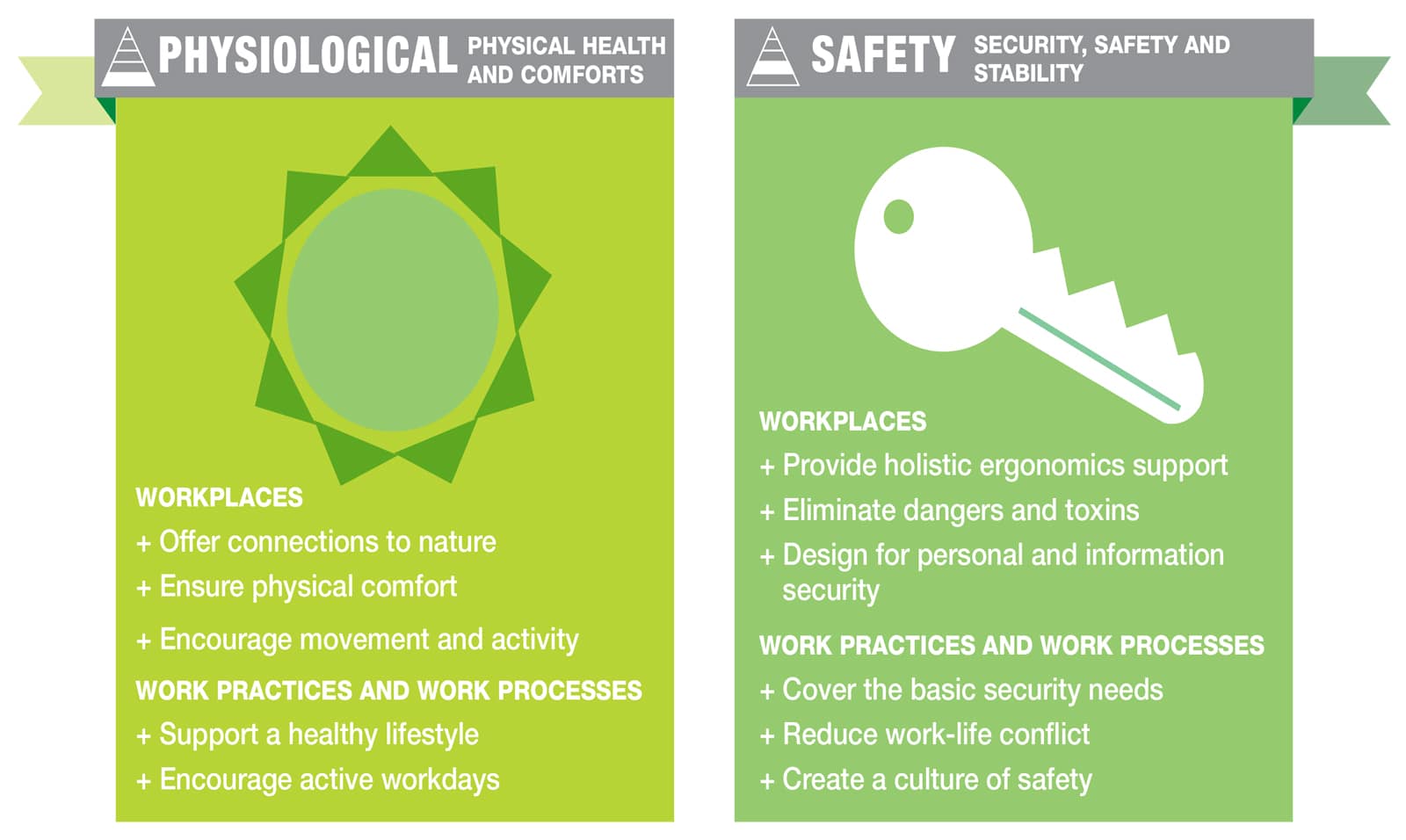
No Comments